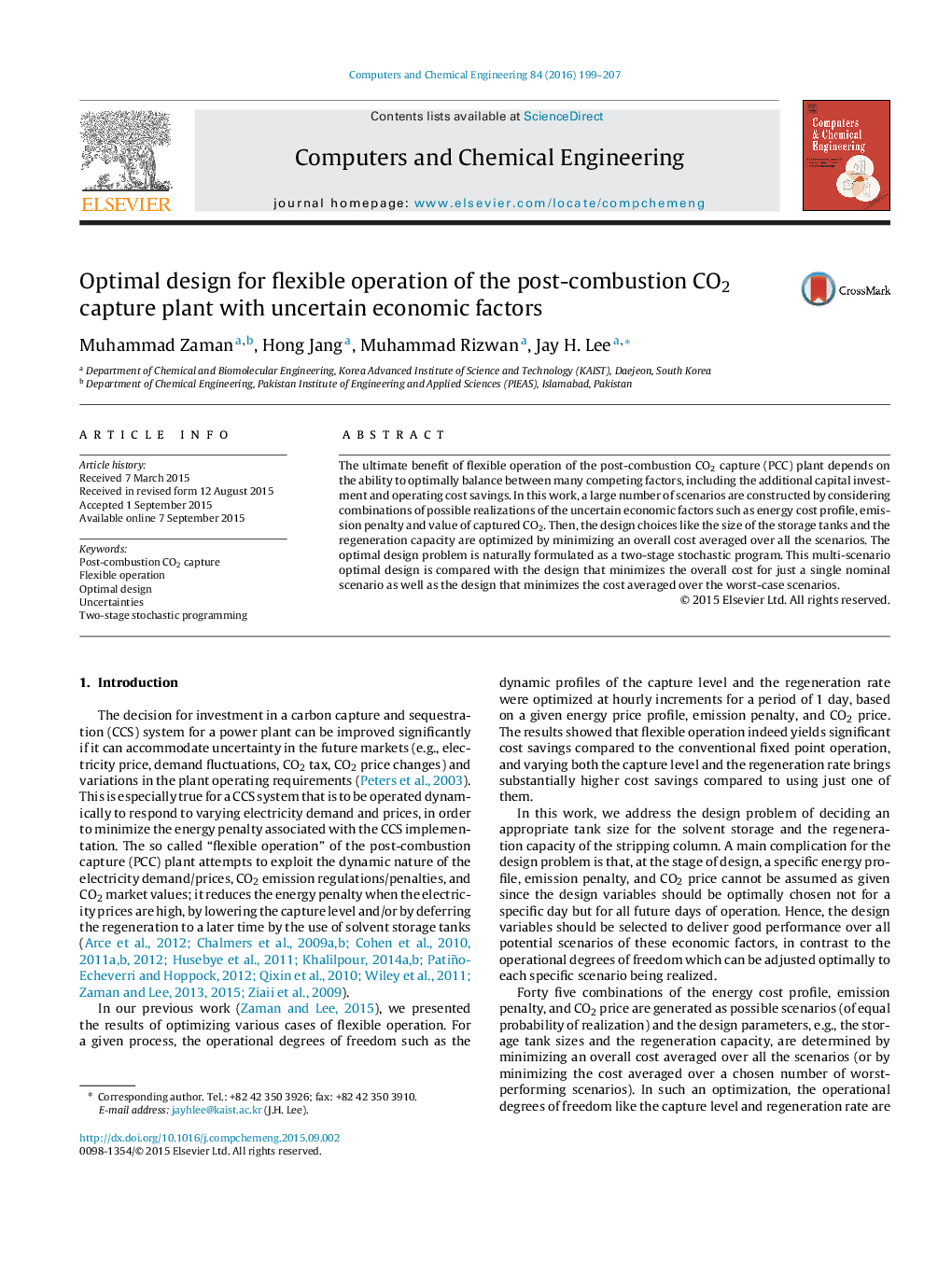| Article ID | Journal | Published Year | Pages | File Type |
|---|---|---|---|---|
| 172081 | Computers & Chemical Engineering | 2016 | 9 Pages |
•A detailed absorption/desorption model is used for cost evaluation and optimization.•Incremental capital cost is included in the analysis.•Uncertainties in the relevant economic factors are considered.•Both the capture level and regeneration rate are assumed to be varied optimally.•A number of different optimal designs are compared.
The ultimate benefit of flexible operation of the post-combustion CO2 capture (PCC) plant depends on the ability to optimally balance between many competing factors, including the additional capital investment and operating cost savings. In this work, a large number of scenarios are constructed by considering combinations of possible realizations of the uncertain economic factors such as energy cost profile, emission penalty and value of captured CO2. Then, the design choices like the size of the storage tanks and the regeneration capacity are optimized by minimizing an overall cost averaged over all the scenarios. The optimal design problem is naturally formulated as a two-stage stochastic program. This multi-scenario optimal design is compared with the design that minimizes the overall cost for just a single nominal scenario as well as the design that minimizes the cost averaged over the worst-case scenarios.
